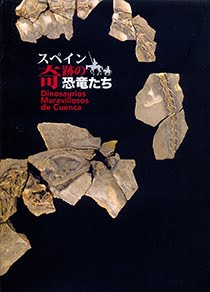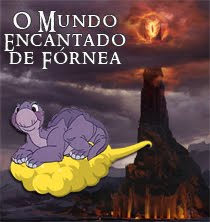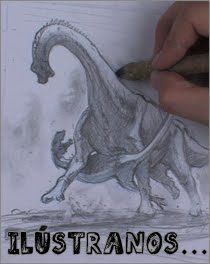Recientemente se ha celebrado el último Encuentro de Jóvenes Investigadores en Paleontología en Cañaveral de León (Huelva). Durante esta vigésima edición del congreso, celebrada del 19-22 abril, Órfão y colaboradores han presentado el trabajo titulado “Species distribution models (SDMs) as a tool to research the Iberian sauropod diversity across the Jurassic-Cretaceous boundary”. Joana Órfão fue la ganadora del premio “El Pakozoico” por sus cualidades como oradora.
Los Modelos de Distribución de Especies (SDM por sus siglas en inglés), son modelos o algoritmos que intentan explicar por qué, cómo y de qué manera se distribuyen las especies en distintas áreas, en base al concepto del nicho ecológico. A pesar de que esta metodología se desarrolló en el campo de la Biología de la Conservación, actualmente se está desarrollando y utilizando en el campo de la Paleontología, ayudándonos a resolver diversas problemáticas evolutivas o comprender distintos escenarios de extinción entre muchos otros. En este caso concreto, se pretende analizar cómo podrían emplearse estos SDMs para el estudio de la biodiversidad de saurópodos en la península ibérica en el tránsito Jurásico-Cretácico. Durante la ponencia se han destacado las distintas bases de datos, fuentes de información y programas necesarios para el desarrollo de este tipo de estudios, así como también se han destacado todas las posibles problemáticas y desafíos asociados a este tipo de estudios.
A continuación, os dejamos el resumen del trabajo:
Species distribution models (SDMs) are a popular modeling technique used to predict geographic ranges of species. Although developed in the context of Conservation Biology, SDMs are now broadly used across several fields including Paleontology, as they can inform not only about predictions of a species distribution across land and time, but also to address many ecological and evolutionary questions. However, the use of this technique in a paleontological context presents its own challenges: the sparseness and biases present in the fossil data, the influence of the climatic variables used as predictors, and choosing the most appropriate models. We intend to assess if SDMs can be used to inform about the sauropod diversity turnover during the Jurassic-Cretaceous boundary of the Iberian Peninsula. Several authors have used SDMs to explore diversity dynamics and to shed light on climatic constraints in the biogeography of varied fossil groups. Current literature suggests that sauropods may have had a distinct physiology from other dinosaurian taxa. Sauropods are numerous in the fossil record of the peri-North Atlantic context, but their dispersion, diversification mechanisms and phylogeny are still not well understood. By focusing on the Iberian Peninsula diversity, we can draw comparisons between synchronous formations, namely the Morrison Formation in the U.S.A. The simultaneous presence of endemisms and shared taxa between these regions points to a complex paleobiogeographic scenario that the use of SDM techniques will help to understand. An introduction to the SDM technique, the several applications of SDMs in Paleontology, and a rough step-by-step workflow to build a model tailored to our main question will be discussed. Also, the associated caveats, available algorithms, work-around solutions, and general recommended guidelines will be highlighted.
-----
Más información:




























No hay comentarios:
Publicar un comentario